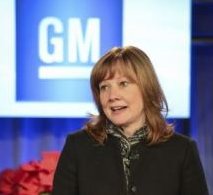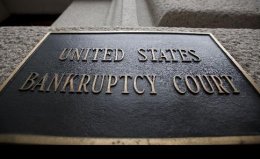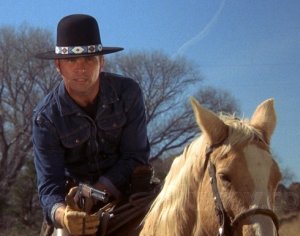 “I’m gonna take this right foot, and I’m gonna whop you on that side of your face… and you wanna know something? There’s not a damn thing you’re gonna be able to do about it.”
“I’m gonna take this right foot, and I’m gonna whop you on that side of your face… and you wanna know something? There’s not a damn thing you’re gonna be able to do about it.”
Billy Jack to Mr. Posner in the 1971 film, “Billy Jack.”
Okay, how many of you remember that scene from the movie? And have watched “Billy Jack” more than one time? Come on, fess up…..
As a 50 year old, tail-end member of the baby boomer generation, I have to admit having seen it a few times. I did feel a twinge of sadness yesterday hearing about “Billy Jack” actor-writer-director Tom Laughlin’s death at age 82. I had seen the predecessor Billy Jack picture – the1967 biker movie, “The Born Losers,” a few years ago, but couldn’t sit through the tedious sequels, “The Trial of Billy Jack” or “Billy Jack Goes to Washington.”
While it may seem like an odd perspective (and memorial), I do think that Billy Jack and a few other characters from that era had an influence on young people’s perspectives on socio-political issues including environmental concerns. For those of you motivated to buy a green car, do a bit of recycling, visit a national park, and avoid eco-irresponsible actions, you may have shared with me a few symbolic memories from those days. I’ve thought about it enough to pull together a Top Five list of unrecognized influential eco-heroes from years ago……
 Iron Eyes Cody: Do you remember the TV commercial about 40 years ago where what looked like an Indian chief from a hundred years earlier would paddle a canoe down a river and see all the pollution – garbage, landfill, smog, and dirty water – with a tear streaming down his face? It came from a public service announcement launched on Earth Day in 1971, one year after that national holiday started up. It featured actor Iron Eyes Cody and was produced by the Keep America Beautiful non-profit organization. The campaign promoted a theme: “People Start Pollution. People can stop it.”
Iron Eyes Cody: Do you remember the TV commercial about 40 years ago where what looked like an Indian chief from a hundred years earlier would paddle a canoe down a river and see all the pollution – garbage, landfill, smog, and dirty water – with a tear streaming down his face? It came from a public service announcement launched on Earth Day in 1971, one year after that national holiday started up. It featured actor Iron Eyes Cody and was produced by the Keep America Beautiful non-profit organization. The campaign promoted a theme: “People Start Pollution. People can stop it.”
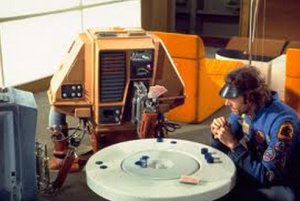 Freeman Lowell in “Silent Running”: Bruce Dern played Lowell in the 1972 sci-fi thriller set in the future. He’s a botanist and ecologist who’s completely dedicated to saving the very last of the plant life from planet earth that’s stored on a fleet of space freighters – hoping it can return to earth for reforestation of the planet. He loses what’s left of his sanity when he sees other cargo freighters get blown up by crewmates while following orders from commanding officers. He kills one of his crewmates who shows up to plant a bomb and destroy the last remaining greenhouse dome that Lowell is desperate to save. One of the memorable scenes from the movie shows Dern wearing a card-dealer visor and distributing cards to play poker with his two drone buddies, who he names Huey and Dewey.
Freeman Lowell in “Silent Running”: Bruce Dern played Lowell in the 1972 sci-fi thriller set in the future. He’s a botanist and ecologist who’s completely dedicated to saving the very last of the plant life from planet earth that’s stored on a fleet of space freighters – hoping it can return to earth for reforestation of the planet. He loses what’s left of his sanity when he sees other cargo freighters get blown up by crewmates while following orders from commanding officers. He kills one of his crewmates who shows up to plant a bomb and destroy the last remaining greenhouse dome that Lowell is desperate to save. One of the memorable scenes from the movie shows Dern wearing a card-dealer visor and distributing cards to play poker with his two drone buddies, who he names Huey and Dewey.
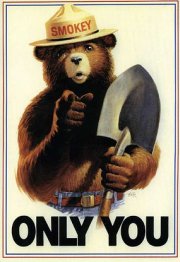 Smokey Bear: Everybody’s seen the Smokey Bear ads, which started in 1944 and have continued to this day. It lays out a tall order – “Only you can prevent forest fires.” That message started up in 2001 after a series of wildfires around the country. The ranger bear character is owned by the federal government and the Ad Council. While John Muir and Teddy Roosevelt have been honored for establishing our national parks and stopping the US from being turned into a giant suburban neighborhood and shopping mall/parking lot, Smokey Bear has had a lot more influence lately.
Smokey Bear: Everybody’s seen the Smokey Bear ads, which started in 1944 and have continued to this day. It lays out a tall order – “Only you can prevent forest fires.” That message started up in 2001 after a series of wildfires around the country. The ranger bear character is owned by the federal government and the Ad Council. While John Muir and Teddy Roosevelt have been honored for establishing our national parks and stopping the US from being turned into a giant suburban neighborhood and shopping mall/parking lot, Smokey Bear has had a lot more influence lately.
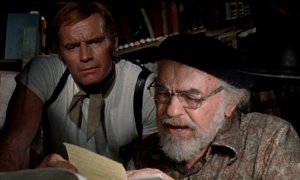 Sol Roth in “Soylent Green”: For those who’ve seen the 1973 film “Soylent Green” starring Charlton Heston, you probably remember the scenes where he talks about the past with his old roommate, Solomon “Sol” Roth. Played by classic 1930s gangster movie star Edward G. Robinson, Roth sermonizes about the past when there used to be blue sky and beautiful beaches and forests. Set in 2022 (nine years from now – yipes!), they live in a big city, probably New York, and the planet is overpopulated and dying off; the air is so thick with smog that people wear surgical masks as they stand in line waiting for their government-rationed food. Soylent Corporation controls all of it and manufactures the food products. It’s in such short supply that crowds riot over it. Heston, playing corrupt-but-justice-seeking cop Thorn, finds out through Roth that Soylent Green is made out of people. The most memorable part of the film is where Roth has given up on living and has gone to a center for euthanasia. Roth finds him there and watches the last moments of Roth’s life as film footage is shown streaming giant images of the earth’s long-lost beauty.
Sol Roth in “Soylent Green”: For those who’ve seen the 1973 film “Soylent Green” starring Charlton Heston, you probably remember the scenes where he talks about the past with his old roommate, Solomon “Sol” Roth. Played by classic 1930s gangster movie star Edward G. Robinson, Roth sermonizes about the past when there used to be blue sky and beautiful beaches and forests. Set in 2022 (nine years from now – yipes!), they live in a big city, probably New York, and the planet is overpopulated and dying off; the air is so thick with smog that people wear surgical masks as they stand in line waiting for their government-rationed food. Soylent Corporation controls all of it and manufactures the food products. It’s in such short supply that crowds riot over it. Heston, playing corrupt-but-justice-seeking cop Thorn, finds out through Roth that Soylent Green is made out of people. The most memorable part of the film is where Roth has given up on living and has gone to a center for euthanasia. Roth finds him there and watches the last moments of Roth’s life as film footage is shown streaming giant images of the earth’s long-lost beauty.
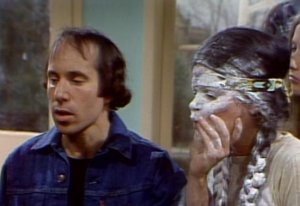 Billy Jack: Yes, it was absurd. A half-Native American, half-white ex-Green Beret war vet, martial artist takes off his shoes and kicks a racist bully upside the head. Another pivotal scene was his spiritual initiation into an Indian tribe where he becomes enlightened and recognizes that all the earth is interconnected – you need to protect the planet, champion equality, and make sure diversity is respected – or life can only be a total bummer. He speaks up for the Freedom School and its young students against the kind of redneck townspeople who killed the stars of “Easy Rider” a couple of years earlier. As hokey as it was, it did make for a very entertaining movie – very similar to drive-in movies we would watch in those days with car chases and fight scenes and social commentary galore. It was enough to inspire “Saturday Night Live” to satirize it a few years later with pop star Paul Simon playing Billy Jack. And come on, we all remember the famous theme song, “One Tin Soldier.” Don’t feel embarrassed about watching the music video and that you might want to sing along……
Billy Jack: Yes, it was absurd. A half-Native American, half-white ex-Green Beret war vet, martial artist takes off his shoes and kicks a racist bully upside the head. Another pivotal scene was his spiritual initiation into an Indian tribe where he becomes enlightened and recognizes that all the earth is interconnected – you need to protect the planet, champion equality, and make sure diversity is respected – or life can only be a total bummer. He speaks up for the Freedom School and its young students against the kind of redneck townspeople who killed the stars of “Easy Rider” a couple of years earlier. As hokey as it was, it did make for a very entertaining movie – very similar to drive-in movies we would watch in those days with car chases and fight scenes and social commentary galore. It was enough to inspire “Saturday Night Live” to satirize it a few years later with pop star Paul Simon playing Billy Jack. And come on, we all remember the famous theme song, “One Tin Soldier.” Don’t feel embarrassed about watching the music video and that you might want to sing along……
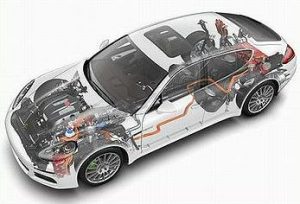 While alternative fuel and fuel efficient vehicles have been honored with plenty of awards lately, the technologies that drive them are now being recognized. Green Car Journal released its nominees for the 2014 Green Car Technology Award, which will be handed out January 22 at the Washington DC Auto Show. WardsAuto released its 2014 Ten Best Engines with one being electric and three clean diesel. Here’s some of the interesting findings:
While alternative fuel and fuel efficient vehicles have been honored with plenty of awards lately, the technologies that drive them are now being recognized. Green Car Journal released its nominees for the 2014 Green Car Technology Award, which will be handed out January 22 at the Washington DC Auto Show. WardsAuto released its 2014 Ten Best Engines with one being electric and three clean diesel. Here’s some of the interesting findings:

